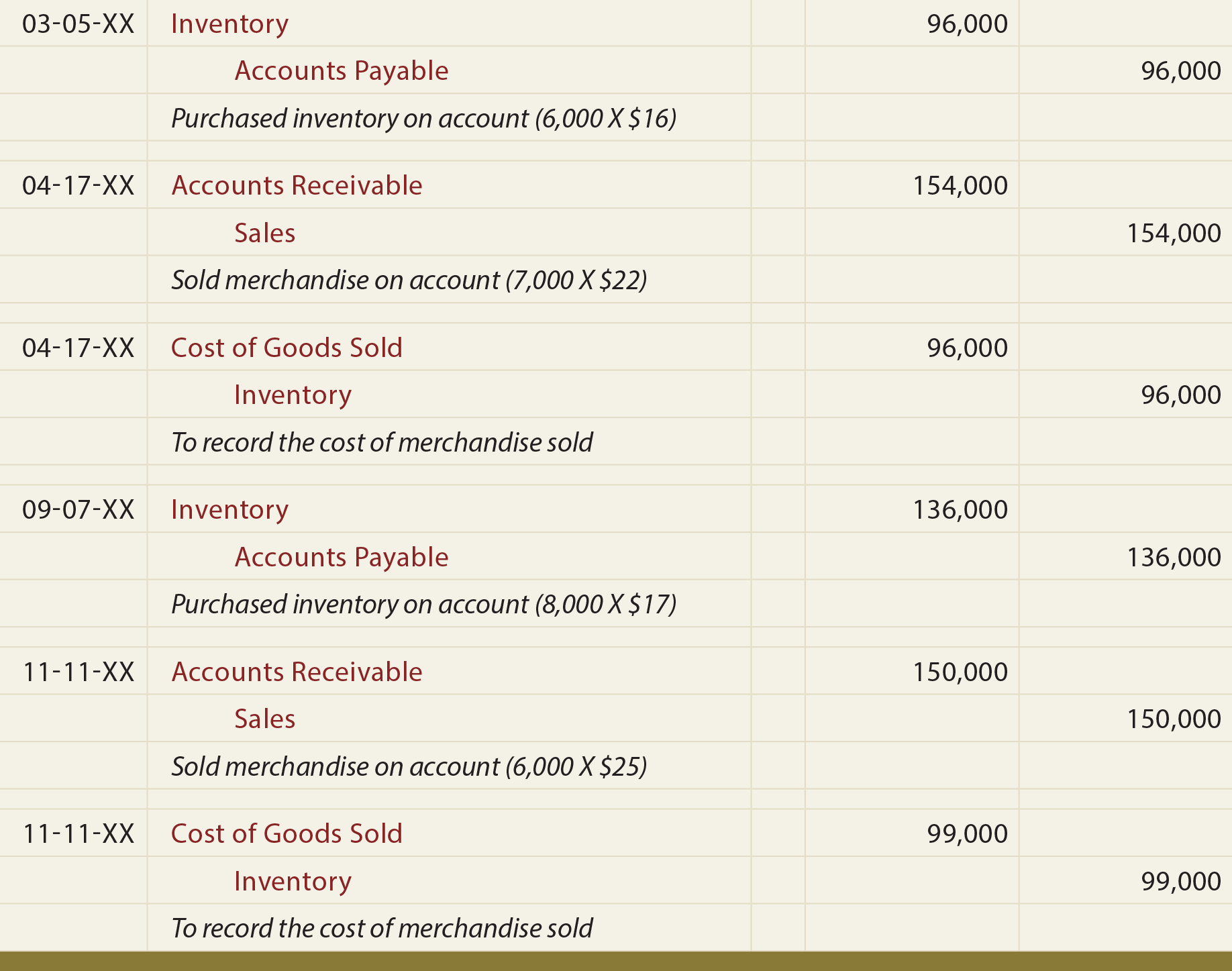
See the example LIFO perpetual inventory card below to get an idea of how it works. The retail sales for this product in this company were $25,000 from Jan. 1, 2019 to Jan. 15, 2019. The last-in, first-out method (LIFO) of cost allocation assumesthat the last units purchased are the first units sold. At the time of the second sale of 180 units, the LIFOassumption directs the company to cost out the 180 units from thelatest purchased units, which had cost $27 for a total cost on thesecond sale of $4,860. Thus, after two sales, there remained 30units of beginning inventory that had cost the company $21 each,plus 45 units of the goods purchased for $27 each. The lasttransaction was an additional purchase of 210 units for $33 perunit.
- Perpetual inventory has been seen as the wave of the future formany years.
- Perpetual and periodic systems require different tools and procedures around how employees document inventory, although they can be complementary.
- Since under FIFO method inventory is stated at the latest purchase cost, this will result in valuation of inventory at price that is relatively close to its current market worth.
- As a result, ABC Co’s inventory may be significantly overstated from its market value if LIFO method is used.
Advantages of FIFO Method:
If the product is new, the employee must add the details of the product when they initially scan it. That additional information includes a description, the product code or SKU and where customers will find it in the store. If the store already carries the product, this scan updates the quantity already in stock.
FIFO Perpetual

Specific inventory tracing is only used when all components attributable to a finished product are known. The value of the remaining inventory (50 apples) would be $55 (50 apples x $1.10 each). First In First Out (FIFO) means the first inventory in will also be the first inventory to be sold. Depending on our Inventory system, we can use either FIFO Periodic or free cash flow fcf formula and calculation. Note that there are other approaches available, such as Last In First Out (LIFO), but this is not an appropriate costing approach for reporting purposes, so we are not going to review it.
FIFO: Periodic Vs. Perpetual
When a customer buys one of these products, the database lists one less product in its count. At any time, the store manager can review the database to learn how much of that product is currently in stock and whether they need to order more. Other businesses that need perpetual inventory include those that specialize in drop shipping, where the manufacturers ship directly to customers or those who specialize in trade and distribution. Understanding which stock is available at a given time requires constant updates or a perpetual system. As we discussed above, FIFO results in a higher gross profit during periods of rising prices. However, if a company used LIFO during a period of rising prices, gross profit would be lower.
After Corner Bookstore makes its third purchase of the year 2023, the average cost per unit will change to $88.125 ([$262.50 + $90] ÷ 4). As you can see, the average cost moved from $87.50 to $88.125—this is why the perpetual average method is sometimes referred to as the moving average method. The Inventory balance is $352.50 (4 books with an average cost of $88.125 each).
The FIFO Method: First In, First Out
Second, every time a sale occurs, we need to assign the cost of units sold in the middle column. When a business buys identical inventory units for varying costs over a period of time, it needs to have a consistent basis for valuing the ending inventory and the cost of goods sold. When using the perpetual inventory system, the Inventory account is constantly (or perpetually) changing. With perpetual LIFO, the last costs available at the time of the sale are the first to be removed from the Inventory account and debited to the Cost of Goods Sold account.
Also called the cost of goods sold (COGS), the costs of sales are the direct expenses from the production of goods during a period. These costs include the labor and materials costs but leave off any distribution or sales costs. This system works by the company accountant recording all purchases into a purchase account. The company then makes a count of the physical inventory and the accountant shifts any balance in the purchases into the inventory account. Next, the accountant adjusts the inventory account to match the cost of the ending inventory. This number is critical since the company does not track unique transactions.
The balance in the Inventory account will be $262.50 (3 books at an average cost of $87.50). The following cost of goods sold,inventory, and gross margin were determined from thepreviously-stated data, particular to perpetual, LIFO costing. The cost of goods sold,inventory, and gross margin shown in Figure 10.15 were determined from the previously-stated data,particular to perpetual FIFO costing. During periods of inflation, a LIFO system may be more appropriate for companies that do not wish to pay as much in taxes, because it will show a higher COGS expense and a lower net income.